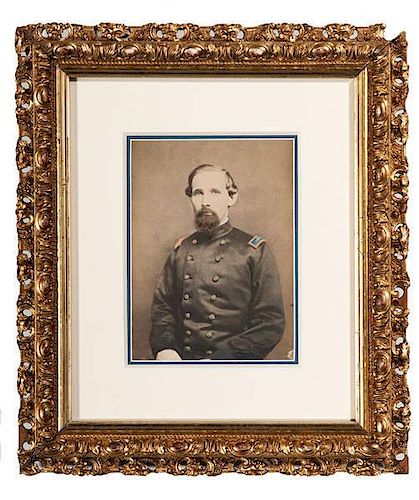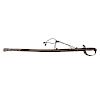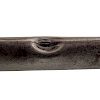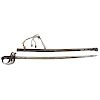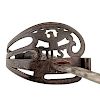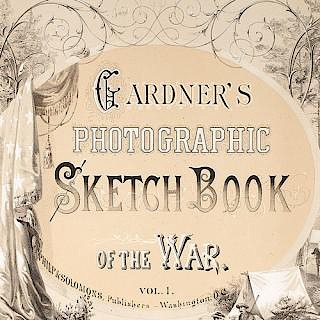Colonel Orland Smith, 73rd Ohio Infantry, Archive Including War Diaries, Sword, and Escutcheon
About Seller
6270 Este Ave.
Cincinnati , OH 45232
United States
With offices in Cincinnati, Cleveland and Denver, Cowan’s holds over 40 auctions each year, with annual sales exceeding $16M. We reach buyers around the globe, and take pride in our reputation for integrity, customer service and great results. A full-service house, Cowan’s Auctions specializes in Am...Read more
Two ways to bid:
- Leave a max absentee bid and the platform will bid on your behalf up to your maximum bid during the live auction.
- Bid live during the auction and your bids will be submitted real-time to the auctioneer.
Bid Increments
| Price | Bid Increment |
|---|---|
| $0 | $25 |
| $500 | $50 |
| $1,000 | $100 |
| $2,000 | $250 |
| $5,000 | $500 |
| $10,000 | $1,000 |
| $20,000 | $2,500 |
| $50,000 | $5,000 |
| $100,000 | $10,000 |
About Auction
Nov 21, 2014 - Nov 22, 2014
Cowan's Auctions dawnie@cowans.com
- Lot Description
Colonel Orland Smith, 73rd Ohio Infantry, Archive Including War Diaries, Sword, and Escutcheon
This outstanding lot has something for Civil War collectors of all persuasions. Col. Orland Smith of the 73rd Ohio Infantry was a brigade commander in both the Eastern and Western theaters. His troops at Gettysburg held Cemetery Hill against determined Confederate attacks, providing a rallying point for disrupted Union soldiers the vital first day of the battle. Late in the first day, General Hancock saw Smith’s brigade standing firm, and approached him. Hancock told Smith “My corps is on the way, but will not be here in time. This position should be held at all hazards. Now Colonel, can you hold it?” When Smith replied he thought they could, Hancock asked “WILL you hold it?” to which Smith replied “I will.”
After Gettysburg, Smith’s brigade was sent to the Western Theater, where it played a prominent role in lifting the siege of Chattanooga. At the battle of Wauhatchie (Lookout Valley,) Smith flung his brigade at Rebel forces poised on a hilltop flanking Federal forces, leading the hill to be renamed “Smith’s Hill.” After the war, Smith returned to the railroad business, serving as Vice President of the B&O Railroad and as executive in other railroads.
This archive contains the sword and scabbard that Smith carried into battle, the scabbard bearing the dent of a Minie ball fired at him on Missionary Ridge. The scabbard deflected the shot, but mortally wounded his horse. Also included is a hand-colored 6 x8 in. albumen photograph of Smith as a colonel (5.5 x 7.5 in. visible), professionally re-framed in a 13.25 x 15.25 in. contemporary frame.
The most colorful item is a breathtaking, hand-painted escutcheon on canvas, detailing Smith’s wartime service. In the top left quadrant is the bugle of the 73rd Ohio Infantry. The lower left quadrant displays the four divisional badges he served under. The upper right shows his ranks of Colonel and Brigadier General, and the lower right quadrant presents the flags of the 1st Division, 11th Corps, as well as the national flag. The bars of the red cross, which are centered on the Seal of the State of Ohio, list all the engagements Smith fought in. Depictions of his medals hang below. 25 x 30 in., framed, 26.25 x 31.25 in. overall.
The “meat” of the archive is five diaries. The first details Smith’s business dealings before the war, two more are war-date diaries (1862 and 1863) that include copies of telegrams received from superiors, one is the war-date diary of his wife, and the last is an 1865 post-war diary (Smith resigned his commission on February 17, 1864 and returned to the railroad business). The archive is also accompanied by a large amount of photocopied research material. - Shipping Info
-
SHIPPING. At the request of the buyer, Cowan's will authorize the shipment of purchased items. Shipments usually occur within two weeks after payment has been received. Shipment is generally made via UPS Ground service. Unless buyer gives special instructions, the shipping method shall be at the sole discretion of Cowan's Auctions, Inc.. Cowan's is in no way responsible for the acts or omissions of independent handlers, packers or shippers of purchased items or for any loss, damage or delay from the packing or shipping of any property.
-
- Buyer's Premium



 EUR
EUR CAD
CAD AUD
AUD GBP
GBP MXN
MXN HKD
HKD CNY
CNY MYR
MYR SEK
SEK SGD
SGD CHF
CHF THB
THB